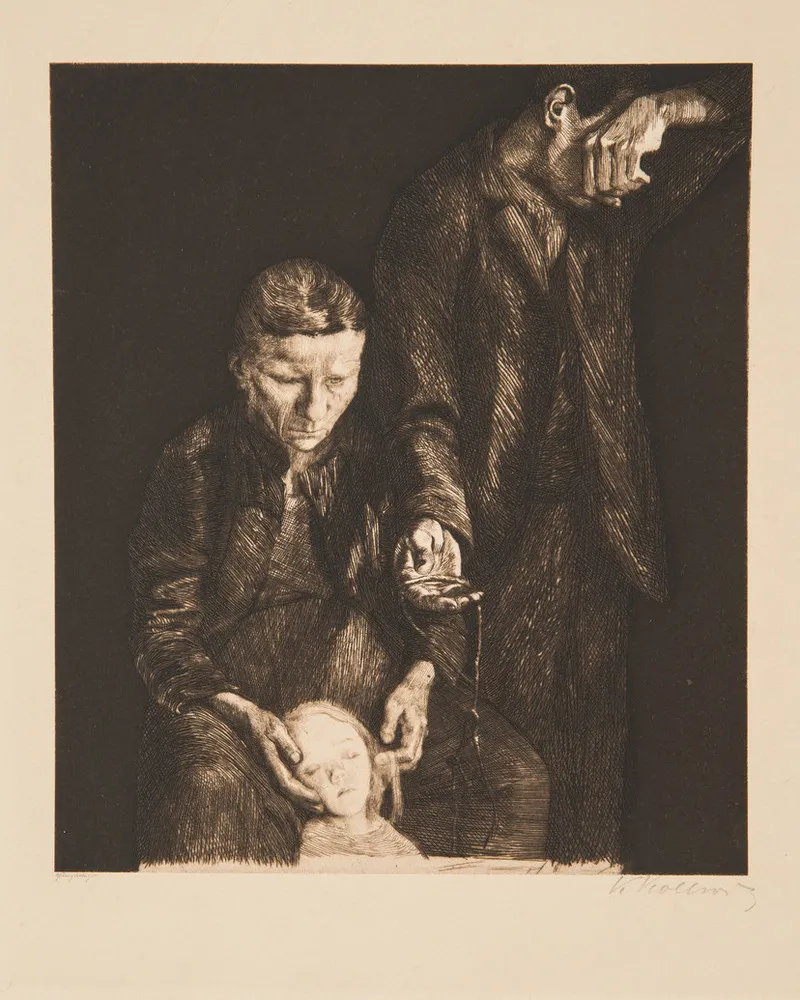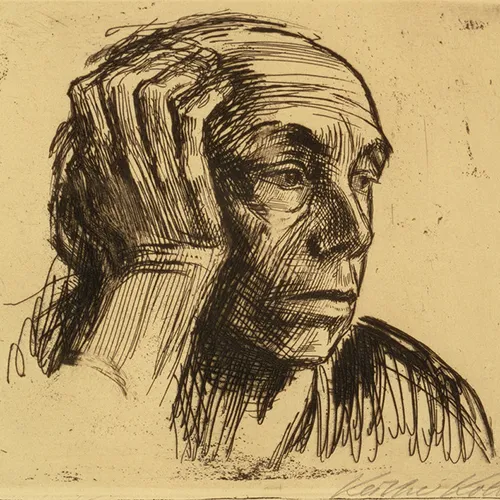The Downtrodden | Artwork | National Museum of Women in the Arts (original) (raw)
Close up of The Downtrodden


Käthe Kollwitz, The Downtrodden, 1900; Etching and aquatint on paper, 12 1/8 x 9 3/4 in.; National Museum of Women in the Arts, Gift of Wallace and Wilhelmina Holladay; Photo by Lee Stalsworth
Käthe Kollwitz believed that art should effect social change. She originally envisioned The Downtrodden as part of a triptych related to her cycle of etchings called The Weaver’s Rebellion but ultimately developed it as an independent work.
The Downtrodden forces viewers to confront the vulnerability of working-class people struggling to survive. A woman cradles the head of dead or ailing child in her lap; the man standing to her left turns away, covering his face with a hand.
As an expressionist artist, Kollwitz skillfully manipulated her black-and-white medium to maximize the etching’s emotional impact on viewers. Kollwitz contrasted the inky background with the delicate cross-hatching that defines the adult figures. Against these dark areas, the child’s head and shoulders appear startlingly pale.
In The Downtrodden, Kollwitz also acknowledged the range of emotion that the illness or death of a child can wrought. The quiet concern of the woman’s face contrasts with the man’s clenching left hand—a gesture that powerfully signifies the anguished expression it obscures.
Artwork Details
Artist
Käthe Kollwitz
Title
The Downtrodden
Date
1900
Medium
Etching and aquatint on paper
Dimensions
12 1/8 x 9 3/4 in.
Donor Credit
Gift of Wallace and Wilhelmina Holladay
Image Credit
Lee Stalsworth
On Display
No
The Artist, Käthe Kollwitz
German-born Käthe Kollwitz used her prints and sculptures to confront social injustice and suffering.
